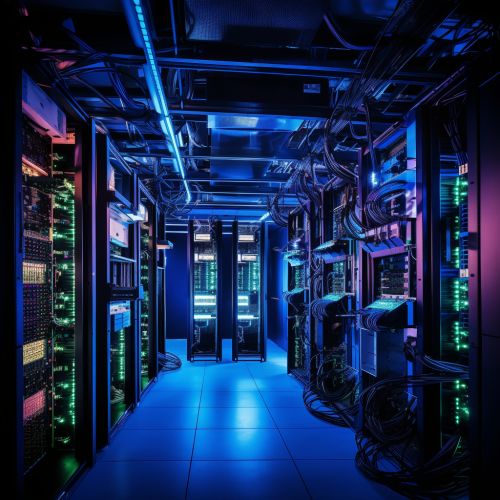Real-time system
Definition
A real-time system is a computer system that is required to react to inputs or events within a finite and specified period. These systems are characterized by their deterministic behavior, where the correctness of an operation depends not only on its logical correctness but also on the time it was performed.
Characteristics
Real-time systems have distinct characteristics that set them apart from other types of systems. These include:
- Deterministic: The behavior of the system is predictable and consistent, with the same input always producing the same output within a given time frame.
- Reactive: Real-time systems continuously react to changes in their environment, often in response to external events.
- Concurrent: These systems can handle multiple tasks at once, often through the use of multithreading or multiprocessing.
- Time-Constrained: Every task in a real-time system has a deadline by which it must be completed. Failing to meet this deadline can lead to system failure.


Types of Real-Time Systems
Real-time systems can be broadly classified into two types: hard real-time systems and soft real-time systems.
- Hard Real-Time Systems: These are systems where it is absolutely critical that responses occur within the specified deadline. The failure to meet a deadline is considered a total system failure. Examples include flight control systems, medical life-support systems, and nuclear reactor control systems.
- Soft Real-Time Systems: These are systems where performance is degraded but not destroyed if deadlines are missed. While it is desirable to meet each deadline, it is not ultimately necessary. Examples include video streaming, online gaming, and virtual reality systems.
Design Considerations
Designing a real-time system requires careful consideration of several factors, including:
- Task Scheduling: Real-time systems often have to manage multiple tasks concurrently. This requires a scheduling mechanism that can prioritize tasks based on their urgency and importance.
- Resource Management: Real-time systems must efficiently manage system resources, such as processing power, memory, and I/O devices, to ensure that all tasks can be completed within their deadlines.
- Fault Tolerance: Given the critical nature of many real-time systems, they must be designed to be fault-tolerant, able to handle and recover from hardware and software failures.
- Security: Real-time systems, particularly those used in critical applications, must be secure from external threats. This includes both physical security and cybersecurity measures.
Applications
Real-time systems are used in a wide range of applications, including:
- Industrial Automation: Real-time systems are used to control industrial processes, where delays can lead to significant financial loss or even dangerous situations.
- Telecommunications: In telecommunications, real-time systems are used to ensure that data is transmitted and received in a timely manner.
- Medical Systems: In medical systems, real-time systems are used to monitor patient vital signs and control life-support machines.
- Automotive Systems: Modern vehicles use real-time systems to control various functions, such as engine management, braking systems, and collision detection systems.
Future Trends
With the advent of technologies such as the Internet of Things (IoT), the demand for real-time systems is expected to grow. These systems will be critical in managing the vast amounts of data generated by IoT devices and providing timely and relevant responses.
